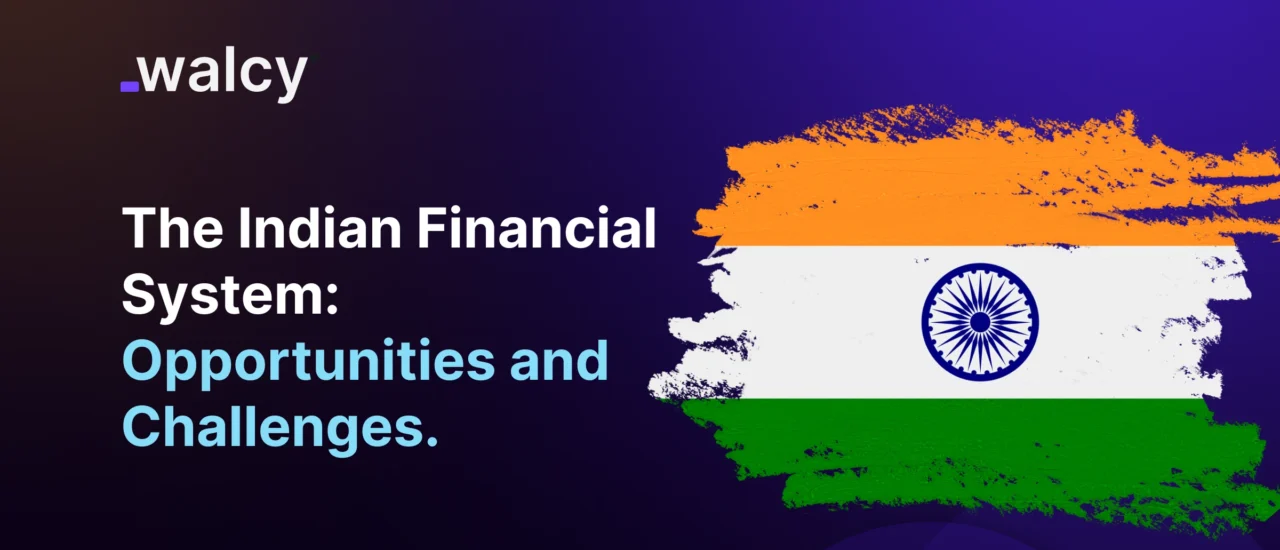The Indian financial system is so interrelated that no possible development of the country’s economic functions takes place without its significant role. It refers to those organizations, markets, rules, and instruments through which funds are mobilized and distributed within an economy. It would outline the constituents of Indian banking and the Financial System, explain the Indian Finance Management System– and discuss thereby the relationship between the Indian Financial System and the Financial Markets.
We will discuss the Financial System and Services in India with a short overview of the Indian Banking System
Overview of the Indian Financial System
Thus, the Indian financial system represents an institutional mechanism for the diversion of savings into the consumption-investment pattern in the country. Briefly, it includes banks, financial institutions, insurance companies, mutual funds, pension funds, and NBFCs. These combined arrangements together mobilize the savings for their gainful allocation to different sectors of the economy.
The broad grouping of the system would attract essentially two segments: first, the organized sector comprising the currently regulated entities, namely, the commercial banks and the stock exchanges; and second, the unorganized sector comprising money lenders, indigenous bankers, and other informal financial institutions.
Indian Banking and Financial System
The Indian banking and financial system represents the backbone of the financial structure in the country. These include several commercial banks, cooperative banks, regional rural banks, and development banks. Commercial banks have dominated the banking scenario, and within the commercial banks, the public sector banks have held the lion’s share of the country’s financial assets.
Public Sector Banks: They are majorly owned by the government. Some major public sector banks include the State Bank of India, Punjab National Bank, and Bank of Baroda. These have the objective of attaining financial inclusion because they have to provide banking facilities to unbanked rural parts of the economy.
Private Sector Banks: The private sector banks comprise HDFC Bank, ICICI Bank, and Axis Bank. All three of them have a wide range of technologically advanced banking solutions and are fierce competitors in the PSB market.
Cooperative Banks: Such banks deal on a cooperative basis and cater chiefly to the credit requirements of the rural and semi-urban areas. They form part of the banking arrangement in India.
Indian Finance Management System
Indian finance management would, therefore, cover all processes relating to the planning, organization, control, and monitoring of financial resources in reaching either organizational or economic objectives. The system follows its course through the influences operating within India based on governmental policies, the dynamics of the marketplace, and the prevailing regulatory environment.
It is guided at the macro level by the Ministry of Finance lays down the fiscal policies, manages the public finances, and coordinates government expenditure. It is the RBI that plays the most vital role in monetary management itself because it has to keep the money supply under control, keep inflation within targeted perimeters, and retain financial stability.
Corporate finance management deals with financial planning, management of the capital structure, budgeting, and making decisions concerned with investments. The corporations operating in India depend on debt and equity finances with still increasing dependence on capital generation through the financial markets.
Indian Financial System and Financial Markets
The financial systems and financial markets in India significantly interlink. A few examples of the financial market in India are the money market, capital market, foreign exchange market, and also the derivatives market. These markets, therefore, become the platform for trading in financial instruments, help in price discovery, and at the very same time facilitate the economy with sufficient liquidity.
Money Market: The integrated money market is that market in which the short-term instruments of finance, such as treasury bills, commercial papers, and certificates of deposit amongst others, are dealt with. It is that part of the system that has to do with the managing of liquidity for the short term.
Capital Market: It is a market meant for trading in long-term securities such as stocks and bonds. It comprises one primary market in which new issues are offered and a secondary market where the outstanding securities are traded. In India, the places where trading in equities and other instruments takes place are known as Bombay Stock Exchange and National Stock Exchange.
It may be termed as that market that may be able to provide the necessary currency trading platform. It is thus highly relevant to determine the various exchange rates and also to manage the foreign currency reserves of the economy.
Derivatives Market: Derivative refers to financial contracts whose value is derived from the underlying asset which may be stocks, commodities, or interest rates. It plays a very vital role in both terms of risk management as well as speculation.
Indian Financial System and Services
Large development has taken place, in fact, within the Indian financial system to such a large array of needs of the huge Indian populace to the economy at large, and also to the government. For all these years, it has served people and the economy with its investment and banking services, including mutual funds and pension schemes.
These services range from savings and current accounts to loan facilities, credit cards, and online banking. Digital banking shaped the face of banking services, and the services became available and accessible. Insurance Services: Industries related to insurance have also grown in various forms in India-from life insurance, and health insurance to general insurance. Major Industry Players: Life Insurance Corporation, commonly known as LIC, ICICI Prudential, HDFC Life, and many more.
In brief, investment management encompasses mutual funds, portfolio management services, and alternative investment funds. Of these, mutual funds have evolved to meet the requirements of investors and have been one of the preferred channels of investment by retail investors in equity markets. Pension services encompass EPF and NPS provided to Indians both in the organized and unorganized sectors.
Indian Banking System: The Challenges and Opportunities
The Indian banking sector has changed radically in the past couple of decades or so and has been pushed by the liberalization of the economy, rapid changes in technology, and reformative measures taken by the regulators. However, factually speaking, several challenges stare the system in the eye for which a remedy needs to be sought and that too quickly if growth is to be sustained.
Non-Performing Assets: The high incidence of NPAs, known cases of window-dressed balance sheets, and more so in large-scale cases in public sector banks, perhaps presented the gravest of challenges before the Indian Banking System. These bad loans stretched the balance sheets of the banks and slowed down credit growth.
Regulatory Challenges: During any growth period, strict regulatory requirements have tended to act as deterrents to the development of the Indian banking system. How to toe the thin line between compliance with regulation and innovation is one of the major challenges before the banks on this count.
Financial Inclusion: Reasonable progress is observed, but a sizable section of the population in this country remains either unbanked or underbanked. According to some experts, increased financial inclusions feature among the unfinished major agendas of the Indian financial system.
Digital Transformation: There are several opportunities in following the digital technologies for the banks; at the same time, it also ensures multiple challenges. In this respect, it will not be unjustified to say that while enhanced efficacy and better experience for customers are the results of digital banking, on the other hand, new avenues have been introduced regarding issues in cybersecurity and data privacy.
Read about: How is Technology Revolutionizing Cross-Border Financial Services?
Conclusion
The headlining ingredient of a substantial stake in all the development and growth structures involves the Indian financial system across all its diverse parts. Indeed, with its healthy banking system, sufficiently developed financial markets, and an increasingly provided range of financial services, the Indian financial system could give a real boost to the economy over the next few years.
Some major core issues relate to the management of NPAs, improvement in financial inclusion, and regulatory complexity. In the way Indian financial systems move toward the furtherance of the evolving world economy, opportunities that engross growth, innovation, and sustainable development will come up.



